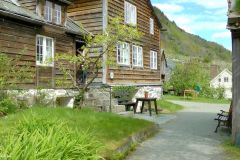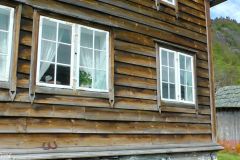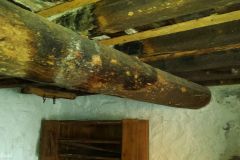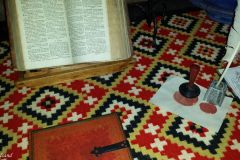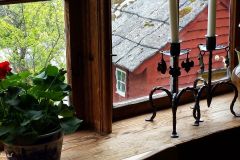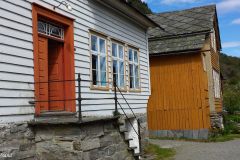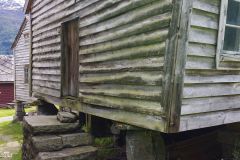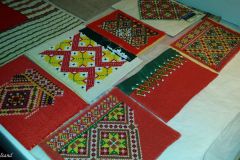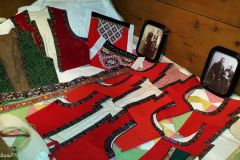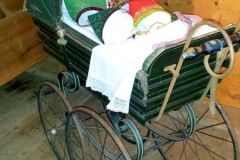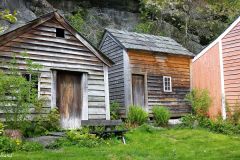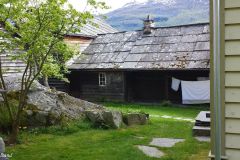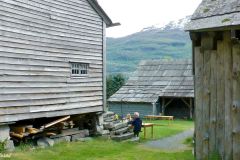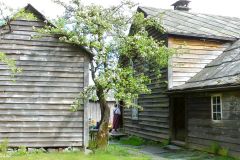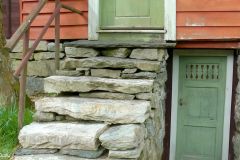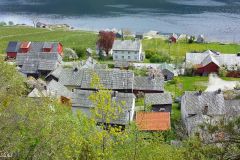Heading south on the Sørfjord on our Hardanger road trip we visited the unique hamlet of Agatunet, one of the very original farm villages of Norway.
Denne artikkelen er også tilgjengelig på norsk.
Agatunet
The thirty listed buildings provide a unique example of building traditions in western Norway. We had no doubt that it deserved a listing among Norway’s cultural environments. Aga is one of the few surviving group farms dating back to the Middle Ages.
Today Agatunet also offers guided tours, a café, exhibitions, concerts, dining and events.
The site has probably been inhabited for more than 3,700 years, but the buildings we face today are considerably younger. We were lucky to get a guided tour of the hamlet.

The oldest house still standing is Lagmannsstova, a court of appeals, built around 1250 by the knight Sigurd Brynjulvson. It is the only house left of its kind in Norway.
Sigurd Brynjulvson drowned in 1303, and the family divided his farm between his daughters. As the years went by, there were more divisions, and being a prosperous area, around 200 people made their living out of this hamlet. By Norwegian standards it was a large number.
They probably built this tight group of buildings for safety, in the form of a hamlet. The mountains are high, avalanches frequent and the setting of Agatunet was underneath a cliff providing the necessary protection. Snow avalanches would be split by the cliff and continue down to the fjord on either side of the hamlet.
At its peak the hamlet had a chapel (it was tore down in 1811), a school, a general store, a post office and a telegraph station. Somehow that peak culminated, progress stopped, the owners and residents went out of cash.
Thanks to national legislation and regional endeavours the hamlet was preserved. Agatunet has for decades been a listed hamlet.
Hardanger slate
After our guided tour we found a way to hike up the hill behind it to get an overview of it all. The number of slate roofs would be very close to 100%.
All roofs at Agatunet, also the newer farm buildings around it, have slate covers. The Hardanger slate was of particularly good quality and used around the country. In Hardanger it may be hard to find an old building not using slate. A fascinating aspect of the slate covered roofs at Agatunet is that they are so varied. The patterns vary, and the width and thickness of the stone vary too.
This is tradition. Hardanger is all about tradition, and anyone wishing to get to the bottom of Norwegian culture should come here, to Agatunet. Have a look inside the farm-houses, have a cup of coffee, and enjoy the atmosphere of this quaint old hamlet.
Images from Agatunet
The road map of this trip
This is the map showing our trip. Zoom in and out and expand to a new tab as you like.
Further reading
Coming up next is the the long way home to Stavanger, via the old industrial town of Odda and the stave church at Røldal – and more.
This is the story of a road trip in the southern part of the region of Hardanger, in Western Norway. Read the articles:
(5) Agatunet (THIS)


